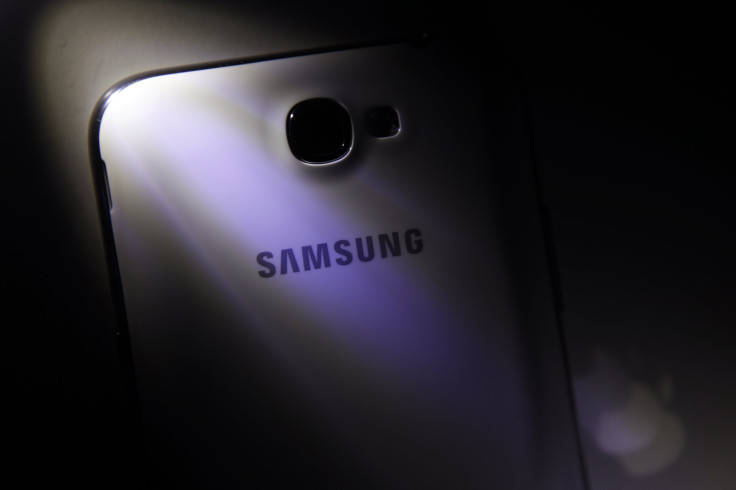Samsung Galaxy Note 3 Specs: Benchmark Scores Inflated Artificially, Apple SVP Calls ‘Shenanigans’

In a reprise of the benchmarking debacle over its Galaxy S4 smartphone, Samsung on Tuesday was caught red-handed artificially inflating benchmark scores of yet another one of its new devices -- this time, the Galaxy Note 3 -- by up to 20 percent, and in one case, 50 percent.
Ars Technica, which discovered the inflation of Galaxy Note 3 benchmark scores, said it began its investigation when it noticed how much better the Samsung Galaxy Note 3 performed compared to the LG G2, which contains similar specs and an identical 2.3 GHz Snapdragon 800 processor.
“After a good bit of sleuthing, we can confidently say that Samsung appears to be artificially boosting the U.S. Note 3's benchmark scores with a special, high-power CPU mode that kicks in when the device runs a large number of popular benchmarking apps,” said Ars Technica’s Ron Amadeo. “Samsung did something similar with the international Galaxy S 4's GPU, but this is the first time we've seen the boost on a U.S. device.”
Ars Technica noticed the Samsung Galaxy Note 3 would enter a “special benchmark mode” when it believed it was running one of many popular benchmarking apps, including Geekbench, AnTuTu or GLBenchmark. To defeat this behavior, Ars Technica disassembled the Geekbench 3 app, renamed it and reassembled it so the Samsung Galaxy Note 3 couldn’t recognize the new app, called “Stealthbench,” as a benchmarking app. At that point, the Galaxy Note 3 treated “Stealthbench” (exactly the same as Geekbench) like any other app, which gave Ars Technica an opportunity to provide true benchmarks that accurately represented the device’s performance abilities.
The Samsung Galaxy Note 3 acted very differently when it was running Geekbench versus Stealthbench, which are, again, exactly the same program. In Geekbench, the Galaxy Note 3 was locked into its fully powered 2.3 GHz mode with all four CPU cores active, but in Stealthbench, the CPU idled, switched power modes and shut off various unused cores, which is how the Galaxy Note 3 CPU would typically respond to most apps not being artificially boosted.
“The difference is remarkable,” Amadeo said. “In Geekbench's multicore test, the Note 3's benchmark mode gives the device a 20 percent boost over its 'natural' score. With the benchmark boosting logic stripped away, the Note 3 drops down to LG G2 levels, which is where we initially expected the score to be, given the identical SoCs. This big of a boost means that the Note 3 is not just messing with the CPU idle levels; significantly more oomph is unlocked when the device runs a benchmark.”
Upon further investigation, Samsung hadn’t designed this “frequency booster” to perform for its Web browser, or its camera, or its video player. This feature was specifically and exclusively written to boost the CPU only during benchmarking tests. After a great deal of extracting, disassembly and file converting, a file called “DVFSHelper.java” -- part of which stands for dynamic frequency scaling, a.k.a. CPU throttling -- contained a list of every package that triggers the special CPU boost, which included Geekbench, AnTuTu, Linpack, GFXBench and Quadrant. Two functions that stood out were “PACKAGES_FOR_BOOST_ALL_ADJUSTMENT,” which is the CPU booster, and “PACKAGES_FOR_LCD_FRAME_RATE_ADJUSTMENT,” which apparently alters the Galaxy Note 3’s GPU and its display’s frame rate to make the phone look like it’s working harder.
What’s strange is that even without the artificial benchmark boost, the Samsung Galaxy Note 3 specs still performed well, and even better than the LG G2. In other words, the artificial boost was not only devious on Samsung’s part, but also totally unnecessary. After all, who purchases a smartphone solely off benchmark scores?
Phil Schiller, the senior vice president at Apple and easily the company’s most vocal executive on Twitter, tweeted the original Ars Technica article with one word attached: “Shenanigans.”
About The Samsung Galaxy Note 3
Unveiled at its Samsung Unpacked event on Sept. 4, the new Samsung Galaxy Note 3 features a 5.7-inch Super AMOLED multi-touch display with a resolution of 1080 x 1920 pixels at 386 ppi and runs on the aforementioned quad-core Snapdragon 800 processor from Qualcomm. The Galaxy Note 3 comes with 3 GB of RAM, a 3,200 mAh removable battery that boasts a reported 25 hours of talk time, and runs the new Android 4.3 Jelly Bean from Google.
Besides its specs, the Samsung Galaxy Note 3 also features a 13-megapixel camera with digital image stabilization and a 2-megapixel front-facing camera, as well as a new and improved S Pen stylus that launches the Air Command palette, which includes functions like Action Memo, Scrapbooker, Screen Write, S Finder and Pen Window.
What do you think about the Galaxy Note 3? Does it bother you that Samsung attempted to artificially inflate the specs and performance of its newest phone? Sound off in the comments section below.
© Copyright IBTimes 2024. All rights reserved.












